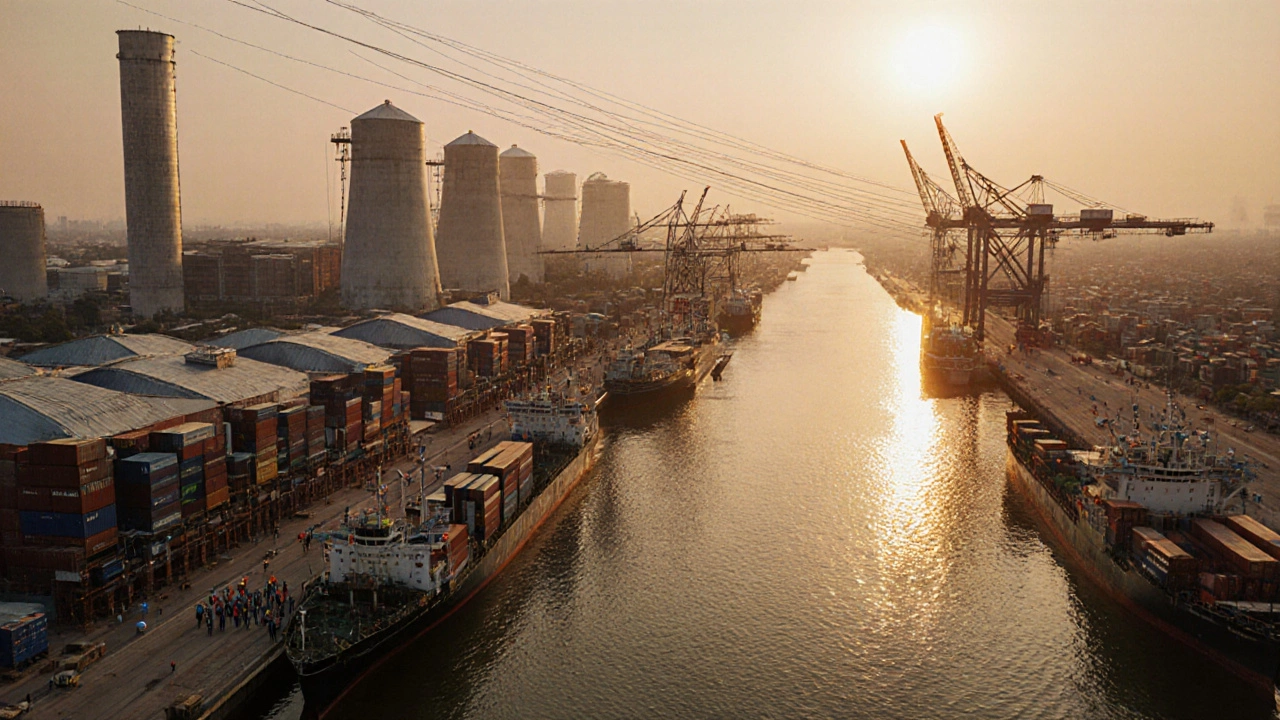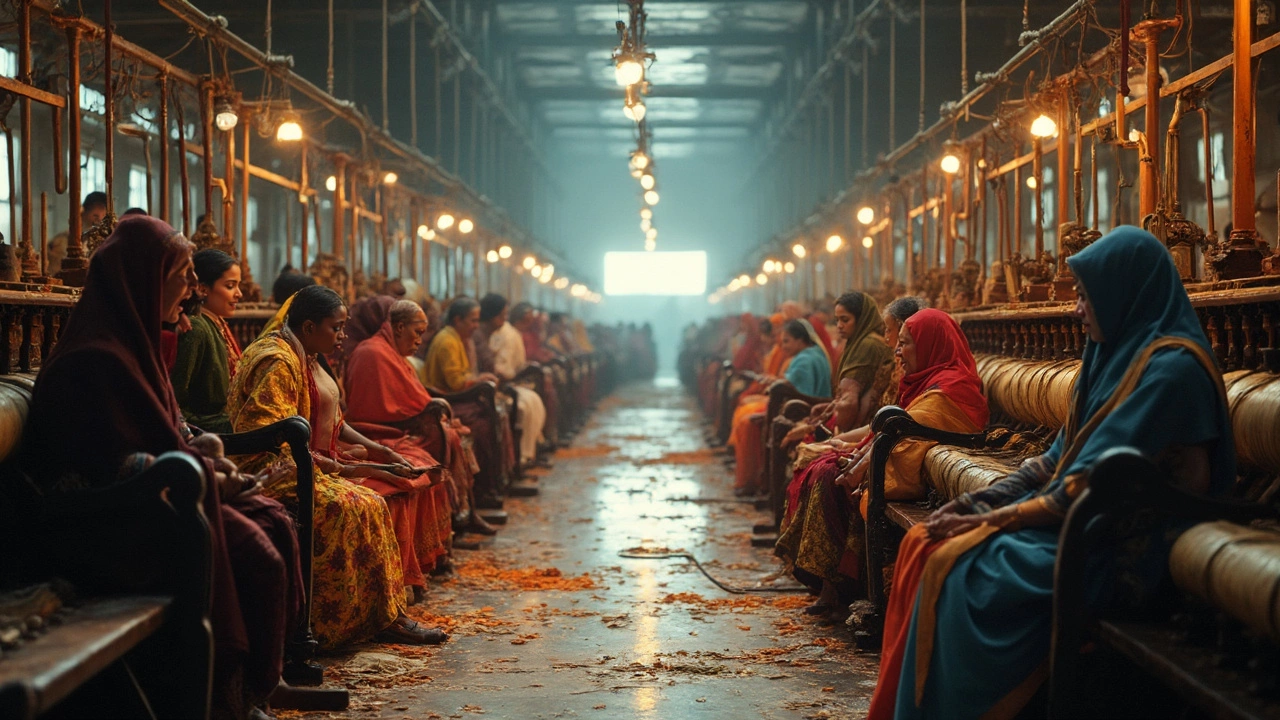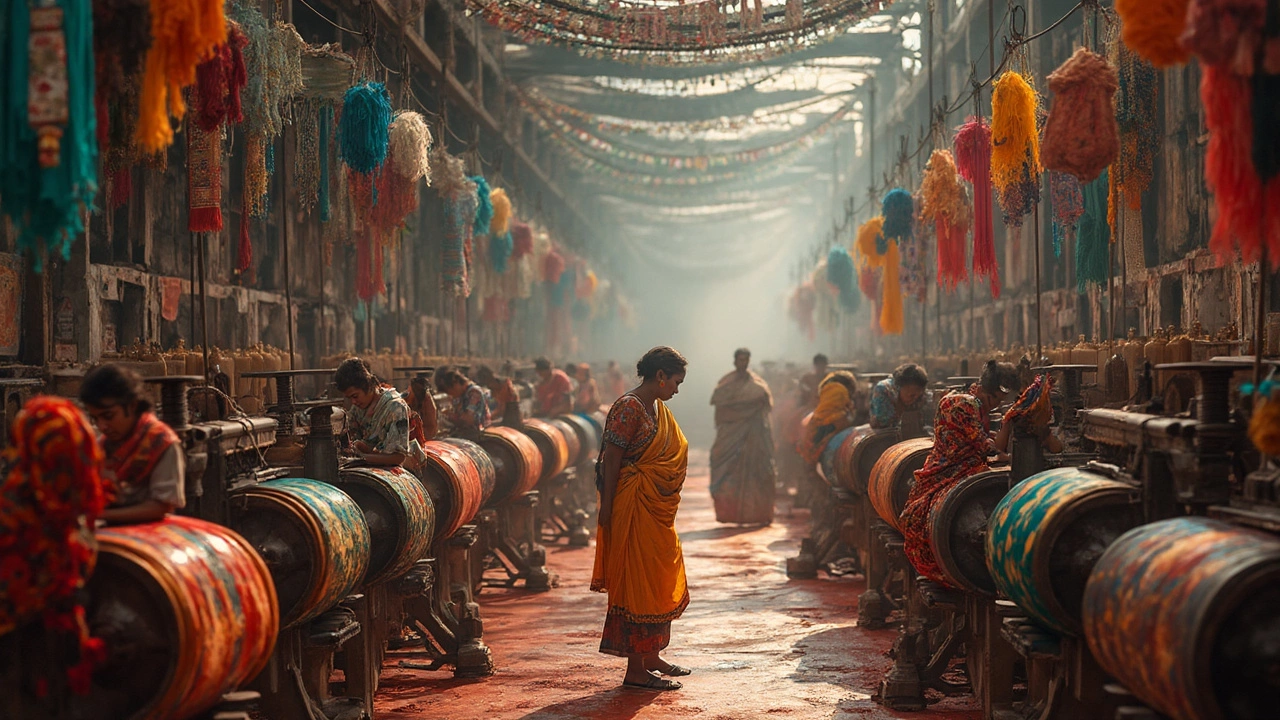- How Much Do I Need to Start a Small Scale Manufacturing Business? Jun 4, 2025
- Importing a Car to India from the USA: What You Need to Know Dec 9, 2024
- Top Profitable Food Processing Business Ideas Nov 24, 2024
- How to Make $200 a Day from Home: Proven Methods in 2025 Jul 20, 2025
- Most Popular Car in India 2025: Which Model Leads the Roads? Oct 23, 2025
Indian Textile Industry: What’s Happening and Why It Matters
India’s textile sector is huge – it employs millions, contributes over 2% to GDP and ships billions of meters of cloth every year. If you’re wondering why this industry matters, think of it as the backbone of many small towns, a major export earner and a fast‑changing field where tradition meets tech.
Below we break down the main pieces of the puzzle: the biggest product groups, the regions that lead production, the hurdles factories face, and the trends that could shape the next decade.
Key Segments of the Indian Textile Industry
First, let’s look at what’s actually made in India. The sector covers everything from raw cotton farming to high‑end designer fabrics. The biggest categories are:
- Cotton yarn and fabric: India is the world’s top cotton producer, so yarn and plain weave fabrics dominate the market.
- Man‑made fibers: Polyester, viscose and blends are growing fast because they are cheaper and meet global fashion needs.
- Silk and luxury fabrics: Regions like Varanasi and Kanchipuram create premium silk that fetches high prices abroad.
- Technical textiles: Products used in automobiles, medical gear and construction are a newer but lucrative niche.
Export numbers tell the story clearly – cotton yarn, knitwear and home textiles lead in shipments to the US, EU and the Middle East.
Challenges and Growth Drivers
Running a textile unit in India isn’t always smooth sailing. Some of the biggest pain points are:
- High logistics costs: Moving raw cotton from farms to factories and finished goods to ports adds up.
- Power reliability: Frequent outages force factories to spend on diesel generators, hurting margins.
- Skilled labor shortage: While there’s plenty of workers, many lack training in modern machinery.
- Environmental pressure: Wastewater treatment and sustainable sourcing are now mandatory for many buyers.
On the upside, the government’s Production‑Linked Incentive (PLI) scheme, tax breaks for exporters and the “Make in India” push are creating a friendlier landscape. Digital tools like AI‑driven design and ERP systems are also helping factories cut waste and improve quality.
One interesting angle is the market for expensive fabrics. Silk from Varanasi, hand‑loom pashmina from Kashmir and artisanal jacquard from Gujarat command premium prices both domestically and overseas. If you’re a buyer looking for high‑margin products, these niches are worth a closer look.
So, what should a newcomer or a small‑scale producer focus on? Start with a clear product niche – cotton knitwear gives volume, while silk or technical textiles can bring higher margins. Invest in basic training for operators; the ROI shows up quickly in reduced downtime. Finally, keep an eye on sustainability certifications – many overseas buyers now require them.In short, the Indian textile industry is a mix of massive scale and deep craftsmanship, paired with modern growth levers. Whether you’re an investor, a supplier or just curious, understanding the key segments, challenges and policy support can help you make smarter decisions and tap into this vibrant market.
Surat: India's Top Textile City - Which City Leads the Industry?
- Aarav Sekhar
- Oct 2, 2025
Surat reigns as India's biggest textile hub, outpacing Ahmedabad, Coimbatore and Tirupur in turnover, employment and exports. Learn why the city leads and what challenges lie ahead.
Indian Textile Industry Collapse: What Really Happened and What It Means for Manufacturers
- Aarav Sekhar
- Apr 23, 2025
The Indian textile industry, once a global powerhouse, has seen a dramatic downturn in recent years. The decline wasn't caused by one thing, but a perfect storm of rising costs, outdated technology, and tough competition from abroad. Job losses hit millions, and many small manufacturers struggled to survive. This article breaks down exactly why the industry collapsed, who got hurt, and what can be done to turn things around. If you’re in textiles or just curious about big shifts in global manufacturing, you’ll find facts and practical tips here.
How Many Textile Manufacturing Companies Are There in India?
- Aarav Sekhar
- Feb 25, 2025
India's textile manufacturing scene is massive, with thousands of companies scattered across the country. This article dives into the details, examining how these companies contribute to the economy, which regions are the most textile-centric, and what this means for both local and global markets. With a rich history and bright future, India's textile industry is a cornerstone of its economic landscape, providing invaluable employment opportunities and leading innovation. Whether you're a textile enthusiast or just curious, this piece offers an insightful look into a vital sector.


